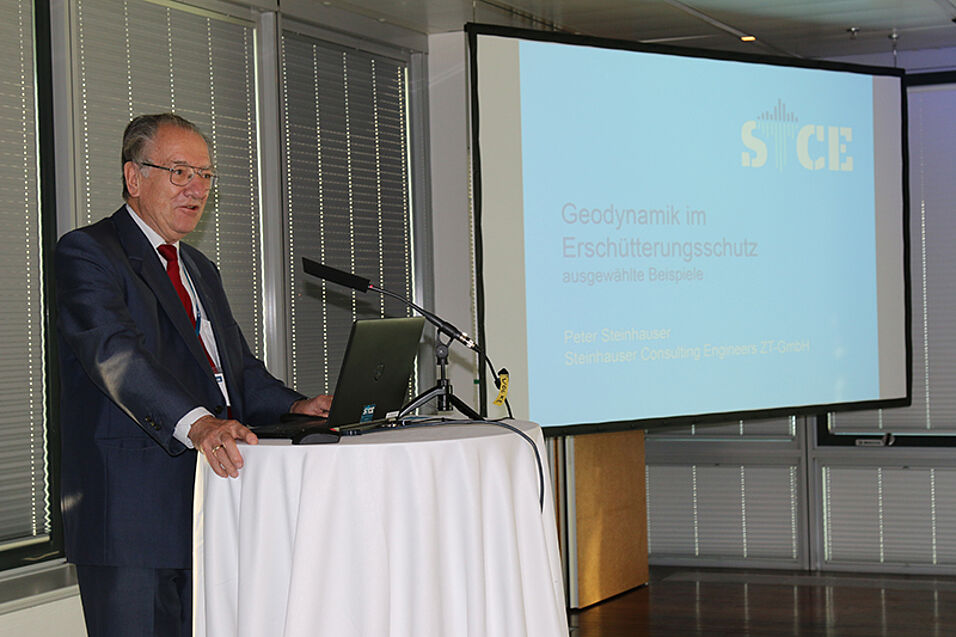Am 7. August 2021 wurde Univ.-Prof. Dr. Peter Steinhauser im 81. Lebensjahr unerwartet aus einem bis zuletzt aktiven und arbeitsreichen Leben gerissen. Die Universität verliert mit ihm einen liebenswerten Kollegen, Wissenschaftler und Lehrer, der die Meteorologie und Geophysik in Österreich entscheidend mitgeprägt hat. Er leitete über mehrere Funktionsperioden das Institut für Meteorologie und Geophysik der Universität Wien und war von 1985 bis 2004 Direktor der Zentralanstalt für Meteorologie und Geodynamik in Wien, die ihm wichtige und zukunftsträchtige Weichenstellungen zu verdanken hat.
Peter Steinhauser war korrespondierendes Mitglied der Österreichischen Akademie der Wissenschaften und Träger des Großen Silbernen Ehrenzeichens für Verdienste um die Republik Österreich.
Wesentliche Akzente zur Erforschung des Schwerefeldes
Peter Steinhauser hat in seiner wissenschaftlichen Arbeit wesentliche Akzente zur Erforschung des Schwerefeldes in Österreich gesetzt und als einer der Ersten auf die Bedeutung einer gleichmäßigen Stationsüberdeckung hingewiesen, besonders im Hinblick auf die raue Topographie und die komplexen geologischen Verhältnisse junger Orogene. Seiner Initiative ist die systematische gravimetrische Vermessung in Österreich zu verdanken. In nationaler und internationaler Kooperation führte sie zu einer modernen Schwerekarte, die den hohen Ansprüchen heutiger Lithosphärenforschung entspricht und darüber hinaus wesentlich zur Bestimmung eines hochgenauen Geoids in Österreich beiträgt.
Mit den 1977 ins Leben gerufenen regelmäßigen Tagungen zur gravimetrischen Erforschung des Alpenraums leistete Prof. Steinhauser einen wichtigen Beitrag zur nationalen und internationalen Forschungskooperation und förderte die interdisziplinäre wissenschaftliche Diskussion mit den Nachbardisziplinen Geodäsie und Erdwissenschaften, weit über die Geophysik im engeren Sinn hinaus.
Breit gestreutes Forschungsspektrum
Prof. Steinhausers wissenschaftliches Forschungsspektrum war jedoch nicht nur auf das Schwerefeld der Erde beschränkt, sondern breit gestreut. Am Beginn seiner Laufbahn standen Untersuchungen zum Einfluss der Sonnenaktivität auf kurzfristige Variationen des erdmagnetischen Feldes sowie Arbeiten zu paläomagnetischen Fragestellungen im Vordergrund, verbunden mit dem Aufbau eines paläomagnetischen Labors, das später in das österreichische Labor für Gesteins-und Paläomagnetik in Gams integriert wurde. Seine Arbeiten zur Gesteinsphysik trugen wesentlich zur flächenmäßigen Erfassung der Dichteverteilung von Oberflächengesteinen in Österreich bei. Andere Publikationen befassten sich mit der seismischen Erkundung der Mächtigkeit österreichischer Gletscher und der Sedimente glazial übertiefter Alpentäler sowie mit geodynamischen Fragen.
Prognose von Erschütterungen
Die Würdigung seiner wissenschaftlichen Leistung wäre unvollständig, wenn man nicht seine Beiträge zur Lösung umweltgeophysikalischer Probleme beleuchten würde, die von weitreichender technischer und gesellschaftlicher Relevanz sind. Die genaue Prognose von Erschütterungen als Voraussetzung für die Planung technischer Konzepte zur Reduktion von Erschütterungsimmissionen ist nur ein Beispiel, das schließlich in Zusammenarbeit mit der Zentralanstalt für Meteorologie und Geodynamik zur Entwicklung eines Prognoseverfahrens (VibroScan®) auf der Basis eines hydraulischen Schwingungsgenerators führte. Diese Methode zur Simulation von Erschütterungen wird weltweit erfolgreich im Hoch- und Tiefbau angewendet.
Mit seiner außergewöhnlichen Persönlichkeit und seinen besonderen Fähigkeiten hat Peter Steinhauser für die Meteorologie und Geophysik in Österreich viel bewegt. Die Universität, die Fakultät und insbesondere auch das Institut für Meteorologie und Geophysik werden ihn als einen liebenswerten Menschen sowie hilfsbereiten und geschätzten Kollegen in bester Erinnerung behalten. Unsere tiefe Anteilnahme gilt in diesen traurigen Stunden seiner Familie und seinen Freunden.
- Die Beisetzung findet in aller Stille im engsten Familienkreis statt. Am 19. August wird um 19 Uhr in der Pfarrkirche Maria Schmerzen (Kaasgraben, 1190 Wien, Stefan-Esders-Platz) eine heilige Seelenmesse gefeiert.



